Argentina
Things to DO
Puerto Madryn
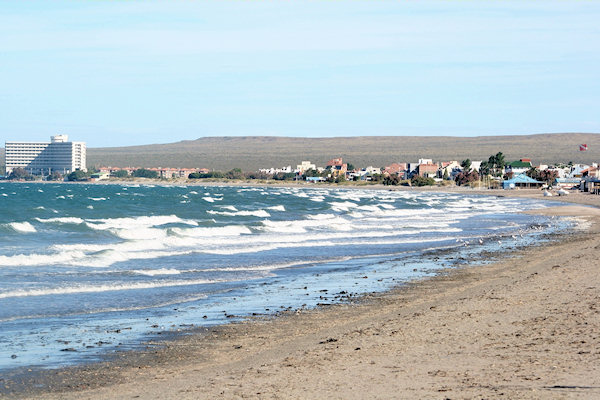 |
|||||
Nestled in a protected cove, on the Golfo Nuevo, fast-growing Puerto Madryn is best know as gateway
to the wildlife sactuary of Peninsula Valdes.
Its active beach lures porteños (residents of Buenos Aires) looking to escape big-city chaos, while
tourists flock here to catch glimpses of the town's biggest attraction: visiting right wales.
Founded by Welsh settlers in 1886, the town takes its name from Love Jones-Parry, Baron of Madryn.
They reached Patagonia in a small ship named the Candelaria, and were driven by a storm into a bay which
they named "Porth Madryn" after Jones-Parry's estate in Wales.
A couple of statues along the costanera (beach road) pay tribute to the Welsh; one to the role woman
played, and the other, at the south end of town, to the Tehuelché (the indigenous people of Patagonia);
to whom the Welsh were much indebted for their survival.
Gaiman
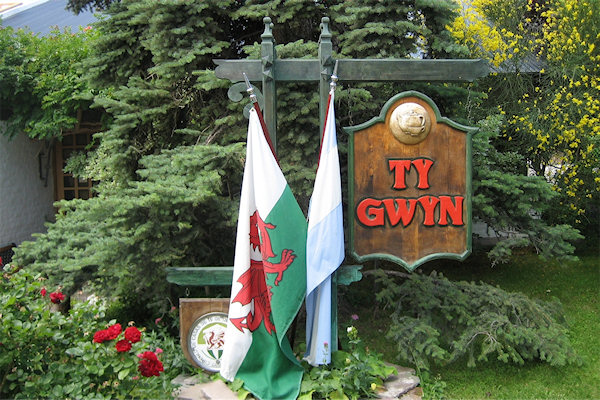 |
|||||
Tehuelché once-wintered in this river valley, thus the name Gaiman, meaning Stony
Point or Arrow Point.
The Welsh constructed their first house here in 1874 and peacefully coexisted with the Tehuelche.
Later immigrant groups of criollos, Germans and Anglos joined the Welsh and continued cultivation
of fruit, vegetables and fodder in the lower Rio Chubut valley.
Today, about a third of the residents claim welsh ancestry and teahouses try to hold on to the afternoon
tradition, increaingly diluted by overbaked tourism.
Gaiman is about 82 km south of Puerto Madryn (about halfway Punta Tomba - the main reason of this trip).
Most of the teahouses and historic sites are within four blocks of the Plaza Roca; just in the town's centre.
Reserva Provincial Punta Tombo
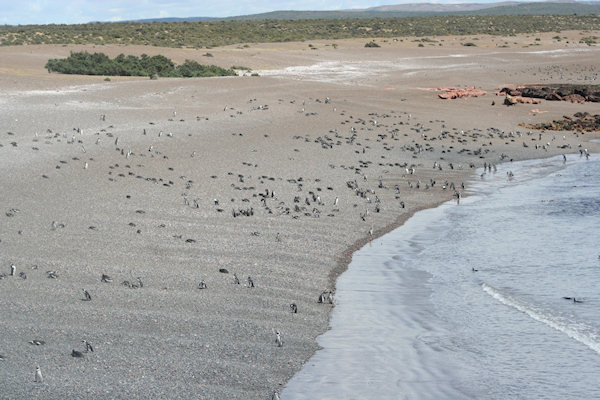 |
|||||
In 1979, the province of Chubut created a 21 hectare reserve in Punta Tombo, 181 kilometers from
Puerto Madryn, in order to protect Magellanic Penguins (Spheniscus magellanicus).
Here one finds one of the world's most varied colonies of sea birds, plus the largest continental penguin
colony outside the Antarctic. It has a population of over 500.000 birds in the months of September and
April.
The penguins build their nests under bushes, in caves and in the open. The caves are found most frequently
in the coastal areas where the soil is easier to dig, and they return year after year to the same nesting
spots.
The males are sometimes larger than the females and have stronger and longer beaks. Both partners defend
their nest, and take turns brooding and feeding the chicks with fish and squid.
Most of their life is spent in the ocean, where they even sleep. In winter they can swim up the coast to
Río de Janeiro (Brazil), on a 3,000 kilometer voyage.
They are able to swim steadily at 8 kilometers per hour, using their fins to propel themselves and their feet
as rudders. During February thousands of overgrown molting youngsters may be seen on the beach.
Marine predators such as the Giant Petrel and the Killer Whale lurk on the shoreline waiting
to feed on young and ailing penguins.
Peninsula Valdes
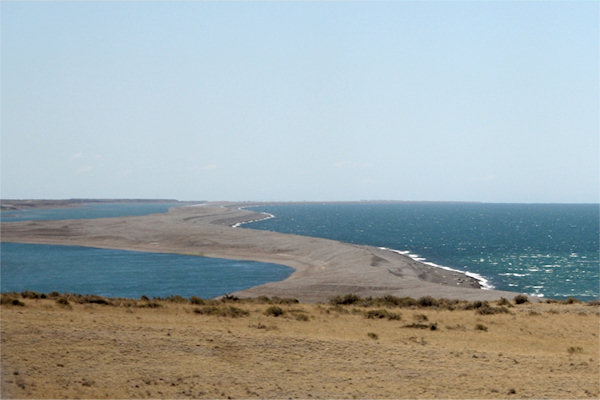 |
|||||
Peninsula Valdès is one of South America's finest wildlife reserve, attracting more than 80.000
visitors per year. With a total area of 3.600 km2 and more than 400 km of coastline, it's home to Sea
Lions, Elephant Seals, Guanacos, Rhea's, Magellanic Penguins and numerous seabirds.
Sheep estancias occupy most of the Peninsula's interior, which include's one of the world's lowest
continental depressions, the salt flats of Salina Grande and Salina Chica, 42m below sea level.
At the turn of the 20th century, Puerto Pirámides, the Peninsula's only village, was the shipping
port for the salt extracted from Salina Grande.
Southern Right Whale
The Nuevo and San José gulfs that surround Península Valdés, are the chosen spots for the
Southern Right Whale to give birth to and suckle its young.
These giants take over this portion of the South Atlantic from June to December. Every year some 600 animals
gather here, although the total population of the Península Valdés area is estimated at 1,200.
The southern right whale (Eubalaena australis) was declared Natural Monument by Law N° 23094, and its current
population, distributed among all the southern hemisphere temperate and sub-Antarctic seas does not number
over 4,000.
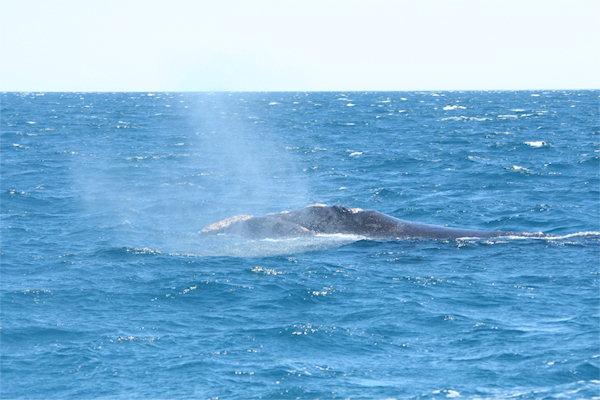 |
|||||
In some areas on its head it shows a cluster of callous-like growths. These are populated by a large number
of parasitic crustaceans. At the top of its head there are two "spiracles" (breathing holes) a
structure analogous to our nose.
One of the southern right whale's most salient features is the way they expel their breath: when they breathe
out, two streams of fine spray form a "V" shape that can be seen for miles around.
This whale species bears a single calf approximately once every three years. Pregnancy lasts twelve months
and the calf is suckled for two years.
When the calves are born they measure between 3 and 5 ½ meters in length and weigh around 3 tons. During
the first two months they grow at the rate of 35 millimeters per day, and as adults reach 12 to 16 meters
length, weighing between 50 and 55 tons.
The first stage of adulthood is between 7 and 17 years of age. The females reach 13 meters in length when
they achieve sexual maturity, the males grow more slowly.
A curious fact about the life of these marine mammals is their feeding habits. They gain weight by feeding
on microscopic food that they filter through the barbs lining their mouth. They have no teeth and simply trap
the krill and plankton they feed on by forcing sea water through their barbs.
Southern Elephant Seals
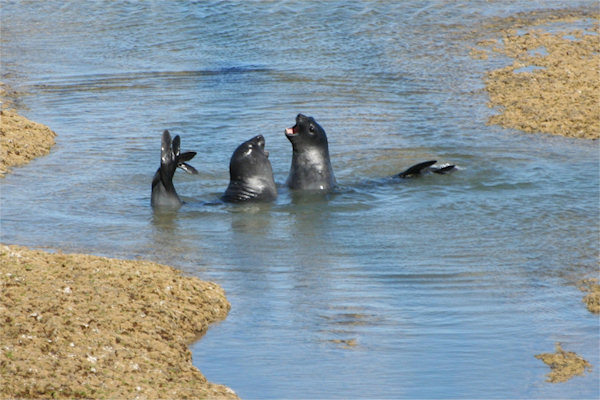 |
|||||
Península Valdés offers visitors the chance to view Southern Elephant Seals (Mirounga leonina)
without having to travel to remote island areas, because this is the only continental colony of this
species.
The southern elephant seal species has sub-Antarctic distribution, with an estimated population of 700.000
individuals, of which 20,000 arrive at Península Valdés between August and March to mate and molt.
This animal belongs to the seal family, and differs from other pinnipeds due to the absence of the outer ear,
and because their lower limbs are pointed backwards, making it necessary for them to drag themselves on
land.
The males have a highly developed proboscis (like an elephant's trunk) on their snouts, and are much larger
than the females, reaching 5 meters in length and weighing up to 3 or 4 tons. The females only reach about
three meters in length and weigh less than one ton.
The pups when born weigh 45 kilos and are pitch black, but become gray after 23 to 30 days of suckling and
rapidly gain weight to around 250 or 300 kilos.
By late August, the first males arrive to form their harems.